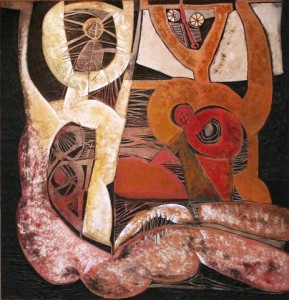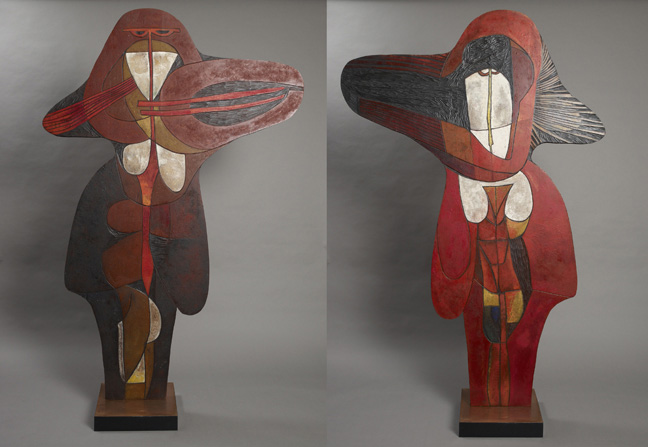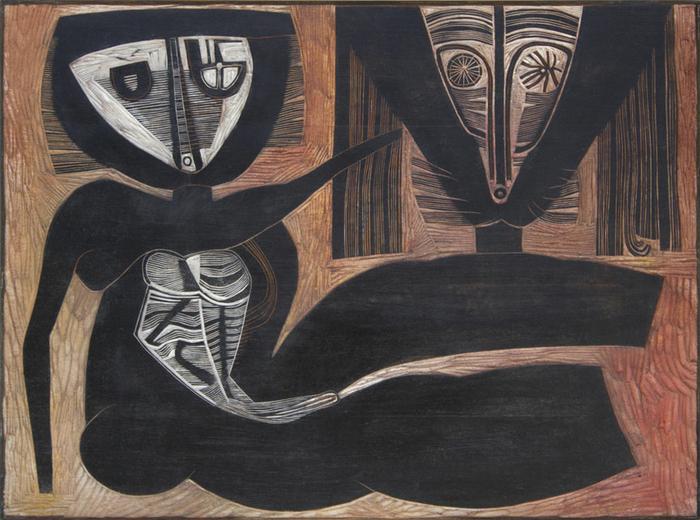
Cecil Skotnes is one of the artists in ’50/50′ in The New Church Museum in Joburg, until April 23, 2016.
Untitled.
About:
Born Cecil Edwin Frans Skotnes, 1 June 1926 in East London
Died 4 April 2009 at the age of 82, Cape Town
The importance of Cecil Skotnes’ contribution to South Africa’s art history will only be fully recognised in time. Looking back at his life and career will bring a greater appreciation of his unique talent and extraordinary body of work, and a clearer perspective on his profound influence on the work and lives of so many fellow artists.
Male & Female, 2010.
The Couple, 2009.
Head, 2001.
Skotnes’ early inspiration came equally from his European art heritage, and his study and understanding of the visual idiom in the indigenous art of Africa. His seminal influences were the art of the ancient cultures and Cubism from the Modern era, but it was the masks and woodcarvings of African tribesmen which he recognised as a direct expression of the African environment. Skotnes believed that the authenticity of African art resulted from its symbolism and forms being based on the structural characteristics of its physical environment – he applied this principle to his art by using figures and forms to symbolically express his contemporary South African experience within its own context.
Reclining Figure and Portrait.
Pippa Skotnes describes the progression to Skotnes’ unique incised and painted panels eloquently:
By the 1960’s the potential of the block itself as the significant component of the image, rather than as a mere substrate for the print, began to prevail. Cecil slowly turned his attention to producing panels which no longer intended to produce prints, but which were rather to be incised and painted as images in themselves. His interest in printmaking as a means to symbolic evocations of African form and landscape, was replaced by an interest in its potential to reveal narrative through serialised imagery.




